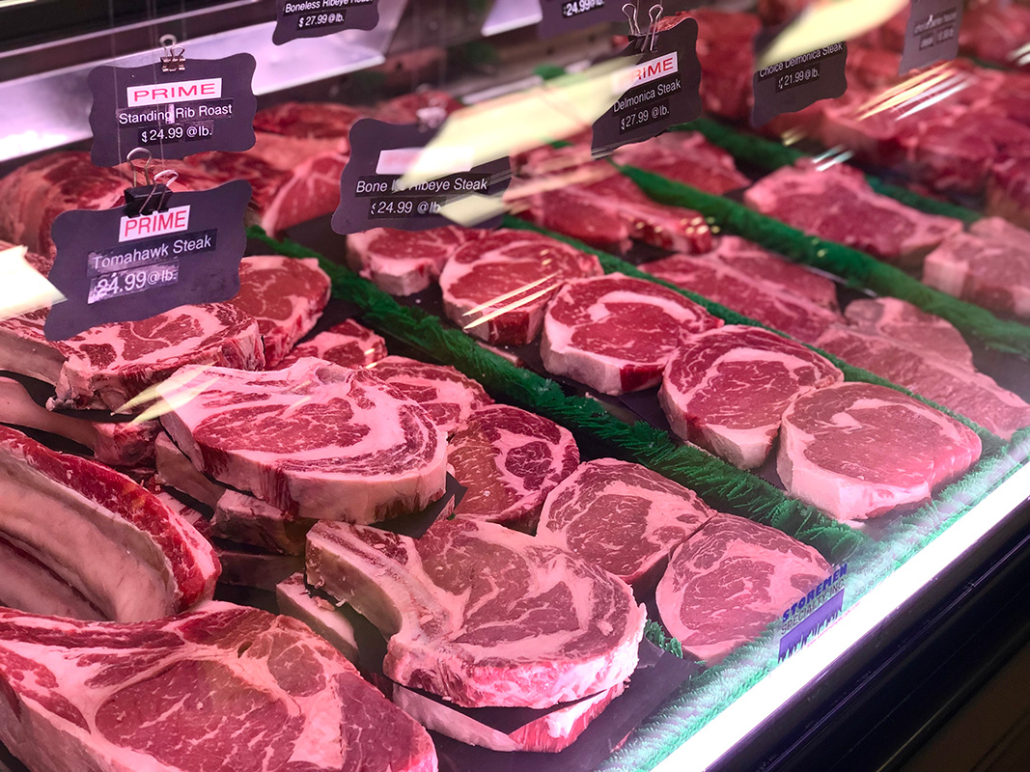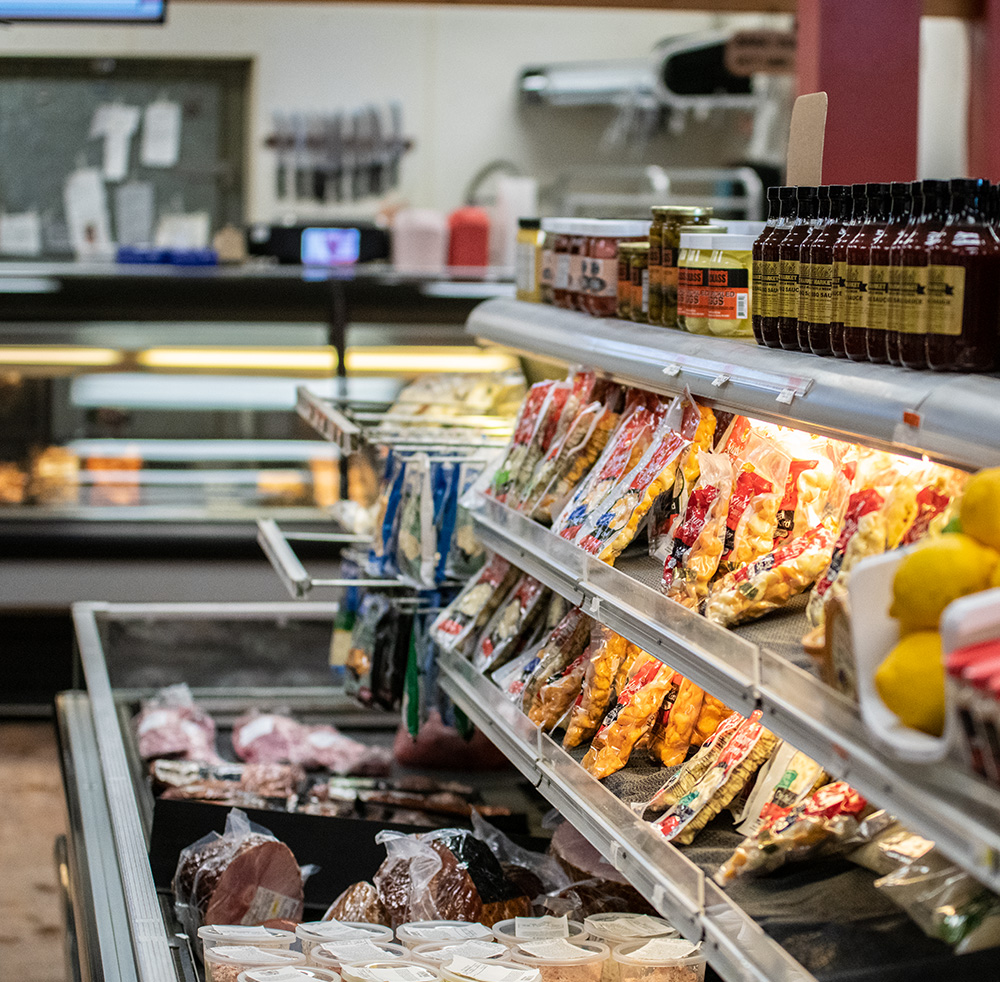Browse Through Bagley Farms Meat Market Edwardsville IL for Farm-Fresh Meat and Specialty Cuts
Browse Through Bagley Farms Meat Market Edwardsville IL for Farm-Fresh Meat and Specialty Cuts
Blog Article
Uncover the Art of the Butcher's Cut in a Modern Meat Market
In the ever-evolving landscape of contemporary meat markets, the butcher's cut has actually transcended its typical roots, merging age-old workmanship with modern methods. What really sets the contemporary butcher apart is their capability to build a much deeper connection in between customers and the origins of their meat.
Development of Butchery Methods

The mid-20th century saw butchery techniques even more fine-tuned by scientific insights right into muscular tissue biology and meat aging, enhancing both inflammation and taste. Developments like vacuum cleaner product packaging and refrigeration prolonged product shelf-life, allowing butchers to branch out offerings and boost quality assurance. This period also noted the surge of customized devices, such as band saws and meat slicers, which increased accuracy and performance in meat processing.
Computerized systems currently help in monitoring pet provenance and optimizing cuts to fulfill certain customer choices. Additionally, a rebirth in artisanal butchery has actually emerged, mixing standard abilities with contemporary knowledge to cater to customers seeking honest and lasting meat options.

Recognizing Meat Cuts

Recognizing the ins and outs of meat cuts is necessary for both butchers and customers looking for top quality and worth. For butchers, specific cuts reflect skill and respect for the craft, guaranteeing marginal waste and optimum return.
The key classifications of meat cuts consist of primal, sub-primal, and retail cuts. Primal cuts, such as the loin, rib, and chuck, are the huge areas originally divided from the carcass. Butchers after that break these down further into sub-primal cuts, before lastly producing retail cuts offered to consumers, like ribeye or tenderloin. Each phase calls for cautious interest to anatomical structure and muscular tissue make-up.
Understanding muscular tissue structure is critical; muscle mass used extra frequently by the animal often tend to be tougher and are best fit for slow-moving food preparation methods, while less-used muscle mass, like those located in the loin, are much more tender and perfect for grilling or roasting. Experience with these differences equips customers to make informed options, boosting their culinary ventures.
Picking High Quality Meat
Choosing the ideal meat involves greater than simply selecting an aesthetically appealing piece from the display. The art of selecting quality meat calls for a critical eye and knowledge of particular qualities that represent quality and excellence. First of all, take notice of the shade; beef ought to have a brilliant, cherry-red color, while lamb should display a soft pink tone, and pork a pale pink. This suggests the meat is fresh and hasn't been subjected to oxygen for too lengthy.
Secondly, take into consideration the marbling, which describes the white flecks of fat within the muscular tissue. Appropriate marbling is a key indication of tenderness and taste, view it as it melts throughout cooking, enhancing the meat's juiciness. Bear in mind, higher marbling often associates with premium top quality cuts, such as USDA Prime.
Texture is one more crucial variable; meat must really feel solid to the touch, not slimed or excessively soft. In addition, be mindful of the aroma. Fresh meat must have a tidy, neutral odor, free from any type of sour or repulsive odors.
Coupling Cuts With Cooking Techniques
Successfully coupling cuts of meat with the suitable food preparation methods is necessary for achieving ideal taste and texture. Various cuts differ in tenderness, marbling, and connective cells web content, each needing details techniques to unlock their possibility. For example, tender cuts like filet mignon and ribeye, with their integral marbling, take advantage of high-heat, quick-cooking approaches such as grilling or pan-searing. These approaches enhance the meat's natural tastes and ensure a juicy finish.
Conversely, tougher cuts like brisket and chuck roast are rich in collagen, which breaks down into gelatin when cooked slowly. These cuts are perfect for braising or slow roasting, allowing the meat to tenderize over time and develop deep, complex anchor flavors. Cuts such as short ribs and pork shoulder fare well with slow-cooking approaches, where expanded cooking times change their durable structures into delicious recipes.
Lamb shanks and oxtail, which call for long term food preparation to soften, are best candidates for stewing or slow simmering. These methods coax out rich, passionate tastes while preserving moisture. By understanding the read more one-of-a-kind features of each cut, cooks and home cooks alike can boost their cooking developments, guaranteeing each dish is both pleasing and unforgettable.
The Butcher's Role Today
Browsing the evolving landscape of the contemporary meat market, the butcher's duty today prolongs past mere prep work of cuts. Contemporary butchers are cooking artisans, instructors, and advocates for lasting techniques.
In addition to crafting specific cuts, butchers now involve straight with customers, using cooking advice and customizing options to suit private demands and preferences. Their expertise in meat aging, marbling, and flavor accounts encourages consumers to make educated choices, enhancing their cooking experiences. This personalized service exhibits the butcher's advancing role as a trusted expert in the cooking area.
Moreover, butchers are essential in decreasing waste, utilizing whole animals to produce varied items such as sausages and stocks - bagley farms meat market edwardsville il. This extensive strategy not only appreciates the animal however additionally straightens with modern sustainability goals. In this way, the contemporary butcher symbolizes both custom and technology, adjusting to an ever-changing market while maintaining the artistry and honesty of their craft

Final Thought
The contemporary butcher's craft delicately weaves conventional techniques with modern-day technologies, highlighting sustainable techniques and honest sourcing. Mastery in recognizing varied meat cuts and quality indications equips butchers to provide enlightened suggestions, straightening certain cuts with optimal food preparation methods. This expertise not just elevates cooking experiences but additionally strengthens the link between customers and the origins of their food. By recognizing historical methods while embracing contemporary demands, the butcher's duty stays vital in today's innovative meat market.
Report this page